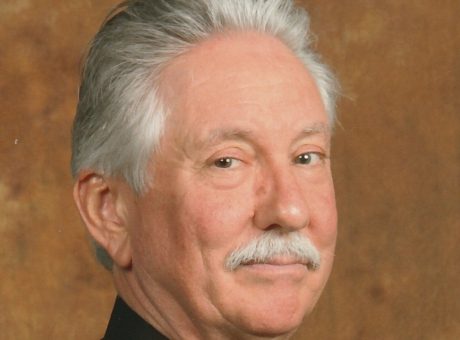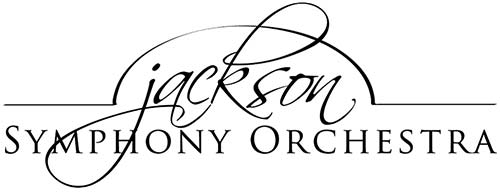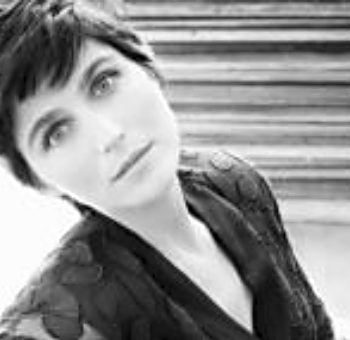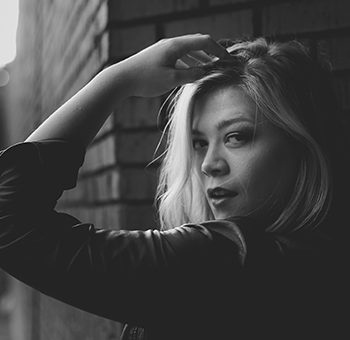
Program Notes October 3, 2015 (By Composer in Residence Bruce Brown)
The JSO’s 2015-16 season, “The Agony and the Ecstasy,” will present a wonderful
variety of pieces reflecting music’s great cathartic power to make our hearts swell with joy, bring tears to our eyes or console us in times of sorrow.
Tonight’s concert, “Joy and Sorrow,” will include a thrilling overture, a fearsome harbinger of approaching war, an eerie waltz, a famous musical nightmare, and a beautiful, sorrowful adagio.
The evening will conclude with one of the most expressive concertos ever written,
Antonín Dvořák’s glorious cello concerto, performed by Jackson’s own world-class cellist, Hannah Holman.
Festive Overture
In 1954, at the very last minute, conductor Vassili Nebolsin asked Dmitri Shostakovich (1906-75) to write a new piece to open a special concert honoring the 37th anniversary of the October Revolution. Three days later, just in time for the gala event, Shostakovich had written his brilliant Festive Overture.
The exciting overture quickly became a great favorite, and notable performances of it
took place at the 1980 Summer Olympics and the 2009 Nobel Prize Concert.
Ironically, the Russian revolution had earth-shattering repercussions for Shostakovich, who turned eleven just before the Soviets swept to power in 1917. The communist government brutally repressed artists they disliked, and Shostakovich walked a constant tightrope between acceptance and banishment.
Many believe Shostakovich adopted a unique and dangerous role, writing music that seemed to toe the line, but finding subtle ways to mock the tyrannical government.
Shostakovich’s works, including Festive Overture, have a very different emotional impact if one listens with that in mind.
“Mars, The Bringer of War” from The Planets
British composer Gustav Holst (1874-1934) finished Mars, the Bringer of War in August of 1914, just as the great conflagration of World War I erupted on the continent. The music’s harsh, five-beat ostinato and dissonant harmonies evoke all-too-prophetic images of the massive war machines that would soon overrun Europe.
Over the next couple of years, Holst wrote six more movements to complete his wonderfully diverse suite The Planets, which the JSO played in March of 2012, and before that, in March of 1995.
Holst’s vivid title reflects the fact the ancients named the planet Mars after the Roman god of war, but his interest goes beyond astronomy. He found great fascination in the astrological influence he believed Mars exerted over the human psyche.
The suite requires very large orchestral forces that were impossible to assemble during the war. The first complete performance of The Planets had to wait until the conflict was ending, and a special reading for invited guests took place on September 29, 1918, in Queen’s Hall in London. The music wasn’t heard in a public performance until November 15, 1920.
Valse Triste
The eerie music of Valse Triste, by Finnish composer Jean Sibelius (1865-1957), depicts a dramatic scene in which a dying woman seems to dance with a group of spectral guests. Her visitor’s flee when Death appears at her door.
Sibelius originally wrote the music in 1903 as the first of six pieces of incidental music for a play Kuolema (“Death”) by his brother-in-law Arvid Järnefelt.
In 1904 Sibelius revised the piece, and he presented it as Valse Triste on a concert in Helsinki on April 25th.
The haunting music became enormously popular. In its heyday, it was instantly recognizable around the world. The royalties would have made Sibelius a very rich man – if he hadn’t sold the rights for only 300 marks!
“March to Scaffold” from Symphonie fantastique
Hector Berlioz’ (1803-1869) hair-raising March to the Scaffold is the fourth movement of his landmark Symphonie fantastique.
In his own program notes, Berlioz described the piece as a drug-induced nightmare in which his protagonist, “convinced that his love is unappreciated … dreams that he has killed his beloved, that he is condemned, led to the scaffold and is witnessing his own execution…”
Berlioz wrote the Symphonie fantastique in 1830 to express his love for the Irish actress Harriet Smithson. The smitten composer wrote Smithson numerous love letters after seeing her play the role of Ophelia in Shakespeare’s Hamlet on September 11, 1827. Smithson didn’t know what to make of her passionate suitor, and she refused to see him until she heard the symphony two years after its premiere.
She was deeply flattered to be the object of such grandiose affection, and they were married on October 3, 1833.
Unfortunately, their marriage was short and bitter. Be careful what you wish for!
Adagio For Strings
The achingly beautiful Adagio for Strings by Samuel Barber (1910-81) is one of the great icons of 20th century music.
This powerful lament is often heard on concert programs and has been chosen for the soundtrack of several dramatic films including Platoon, Elephant Man and Lorenzo’s Oil.
Barber wrote the Adagio in 1936 as the second movement of his String Quartet in B Minor, Opus 11. Barber realized immediately he had written something very special, and he soon adapted it for string orchestra to make it available to a wider audience. Later he produced a choral version with the text Agnus Dei (“Lamb of God”).
The inspiration for the piece came from verses by the Roman poet Virgil describing how a tiny rivulet can grow into a mighty stream.
Barber’s music certainly begins with a small trickle of melody, but it grows steadily, little by little, until it reaches a stunningly powerful and moving climax.
Cello Concerto in B Minor, Op. 104
When he heard the deeply moving cello concerto of Antonín Dvořák (1841-1904), Johannes Brahms reportedly said “If I had known it was possible to compose such a concerto for the cello, I would have tried it myself!”
Dvořák started to write a cello concerto in his twenties, but he never finished it.
Years later, he refused to write a concerto for the cellist of the Bohemian Quartet, Hanuš Wihan, saying he didn’t find the instrument suitable. “High up it sounds nasal,” he said, “and low down it growls.”
Then Dvořák heard the Cello Concerto No. 2 in E minor, Op. 30 by Victor Herbert, who later became world famous as a composer of operettas like Babes in Toyland.
Dvořák started work on his own concerto on November 8, 1894, and completed it on February 9, 1895 – at 11:30 in the morning! He conducted the premiere performance with English cellist Leo Stern in Queen’s Hall in London on March 19, 1896.
As he was writing the music, Dvořák received word that his sister-in-law Josefina Kaunitzová had fallen deathly ill. Josefina loved one of Dvořák’s songs, Kéž duch můj sám (“Leave me alone”), and he quoted the melody in the second movement as a tribute to her.
Josefina died on May 27, 1895, and the grief stricken composer added a wonderfully poignant coda to the last movement in her memory.
Dvořák’s cellist friend Wihan suggested adding a cadenza near the coda, but the composer adamantly refused.
He insisted the finale needed to close gradually, with a diminuendo “… like a breath … then there is a crescendo, and the last measures are taken up by the orchestra, ending stormily. That was my idea, and from it I cannot recede.”


